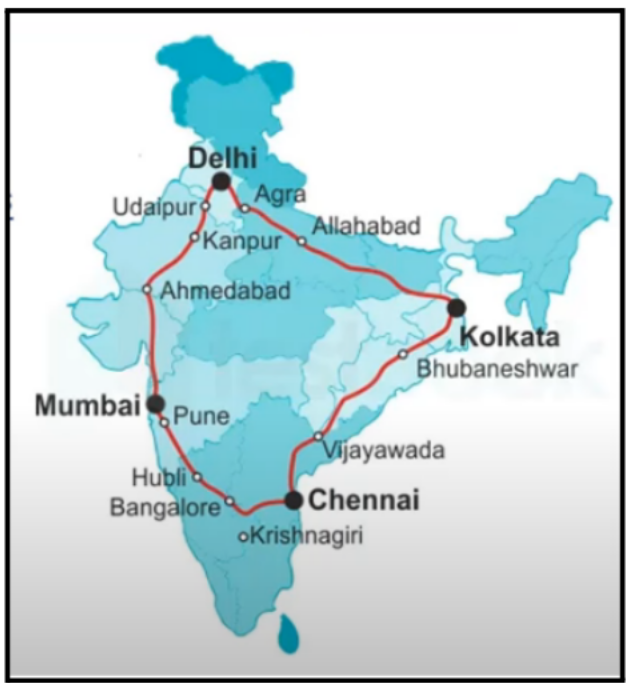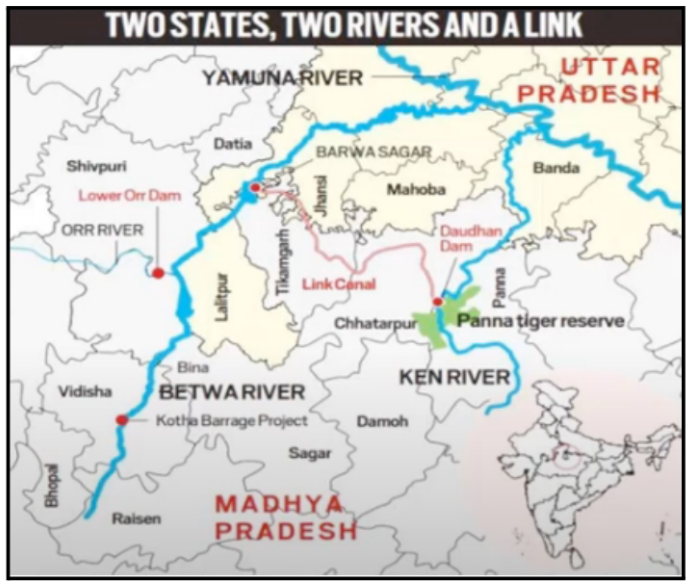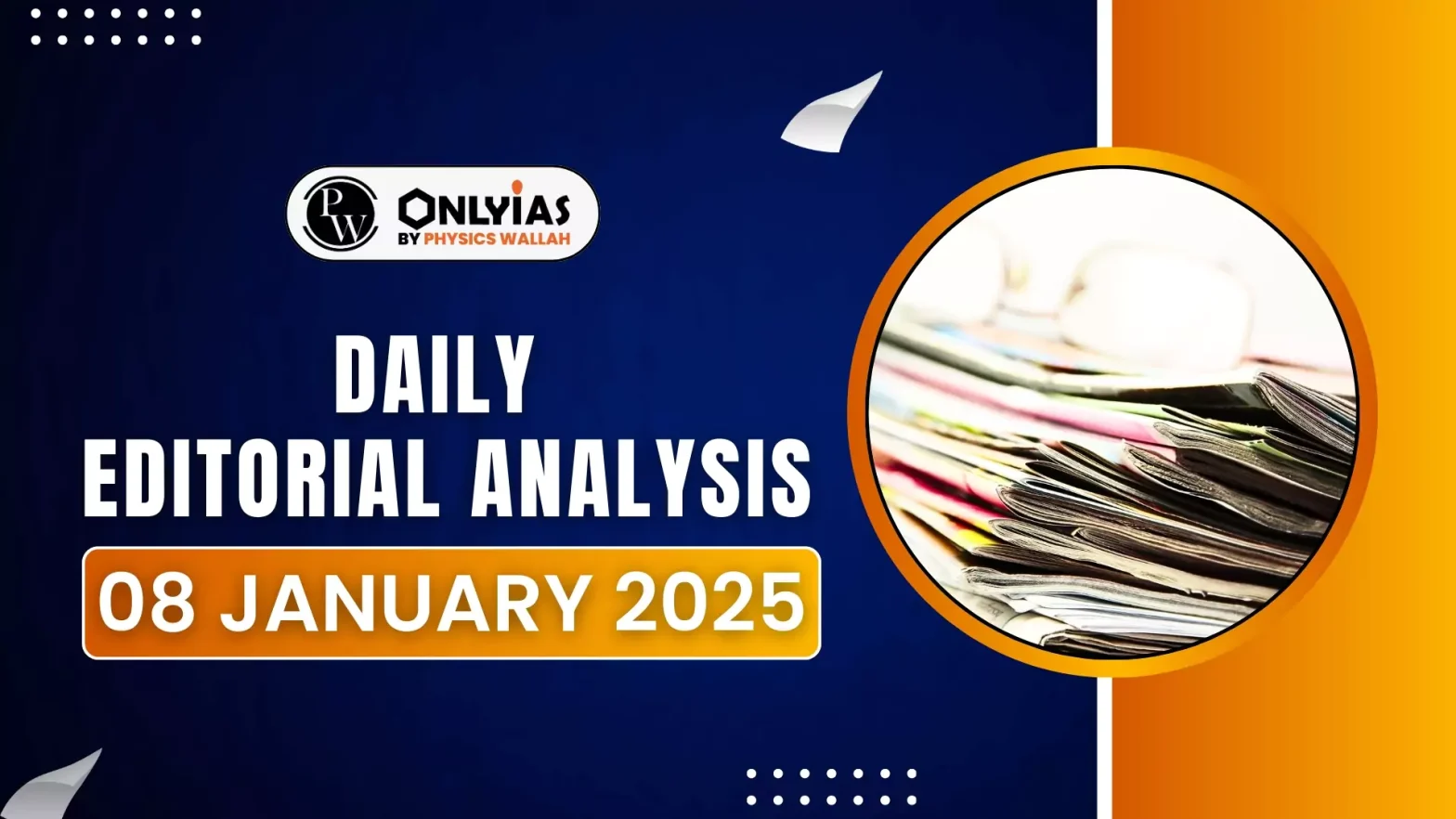India’s infrastructure has seen significant progress, with projects like the Golden Quadrilateral and the Ken-Betwa river linking initiative boosting connectivity, trade, and agriculture nationwide.
Golden Quadrilateral
One of the lasting symbols of the late Prime Minister Atal Bihari Vajpayee’s leadership was the Golden Quadrilateral project.
- Objective: Launched with the aim of linking India’s four major cities—Delhi, Mumbai, Chennai, and Kolkata—the Golden Quadrilateral transformed the country’s road network, fostering better connectivity.
- Impact on Trade and Commerce: The project significantly boosted trade, commerce, and travel, bringing the diverse regions of India closer together.
Enroll now for UPSC Online Course

River Linking Project
- Vision for Inter-Basin Water Transfer: Another major initiative that gained traction during Vajpayee’s tenure was the idea of interlinking India’s rivers.
- Ken-Betwa River Linking Project: On the occasion of Vajpayee’s 100th birth anniversary, Prime Minister Modi laid the foundation stone for the Ken-Betwa river linking project.
- This is the first river linking project under India’s national perspective plan.
- The project is set to benefit water-starved districts in Madhya Pradesh and Uttar Pradesh by providing irrigation facilities to farmers.
More on Ken-Betwa River Linking Project
- At a budgeted cost of ₹44,605 crore, the Ken-Betwa river (both tributaries of the Yamuna) interlinking project seeks to transfer water from the relatively “water-surplus” Ken river basin to the “water-deficient” Betwa basin.
- Two Phases: The Ken-Betwa Link Project consists of two phases.
- Phase-I includes the construction of the Daudhan Dam complex, along with the Low Level Tunnel, High Level Tunnel, Ken-Betwa Link Canal, and powerhouses.
- Phase-II involves three components: the Lower Orr Dam, Bina Complex Project, and Kotha Barrage.
- The water will be used for irrigation, drinking water, and other purposes in the region, including the Bundelkhand area, which has long struggled with water scarcity.

|
Check Out UPSC Modules From PW Store
- Benefits of the Project: In addition to irrigation, the project will also provide drinking water facilities to the people in the region.
- Green Energy: Moreover, hydropower generation from the project will contribute over 100 MW of green energy, helping in India’s transition to sustainable energy.
- Employment Generation: The project will also create significant employment opportunities, especially in rural areas.
Challenges
- Water Scarcity and Climate Change: India’s river basins are becoming increasingly water-deficient, exacerbated by the impacts of climate change.
- Transferring water between river basins is a complex and difficult proposition, particularly when the environmental effects of such projects are considered.
- Environmental Concerns and Historical Examples: Globally, projects like these are often shunned due to their environmental implications.
- The Farakka barrage built in 1975, constructed to save the Kolkata port, is a prime example of unintended consequences.
- While it served its intended purpose, it has led to sedimentation upstream, causing recurrent floods in Bihar, and land grabbing downstream.
- Water as a State Subject: Water management in India is under the State List, but efforts to shift it to the Concurrent List for better coordination face political roadblocks, contributing to increasing inter-state water disputes.
- Disputes Over Water Resources: States often turn to the judiciary to resolve water disputes, but the archaic legal system in India may not be the best avenue for addressing these issues.
Solutions
- Creating a National Commission for Basin Management: There is a need for a unique, homegrown institutional framework to manage water resources and resolve disputes.
- Establishing a National Commission for Basin Management could help ensure that the interests of all parties—both the Centre and the states—are considered in a fair and transparent manner.
- Ensuring Sustainable Water Use: One of the key objectives of inter-basin water transfer projects is to provide water for agricultural use in water-scarce regions.
- Promote Water-Efficient Practices: However, this objective could be undermined if farmers continue to cultivate water-intensive crops in these areas.
- It is crucial to promote water-efficient agricultural practices to ensure the long-term success of such projects.
Enroll now for UPSC Online Classes
Conclusion
By taking a strategic and balanced approach, India can ensure that these infrastructure projects deliver lasting benefits to its people.
![]() 8 Jan 2025
8 Jan 2025


